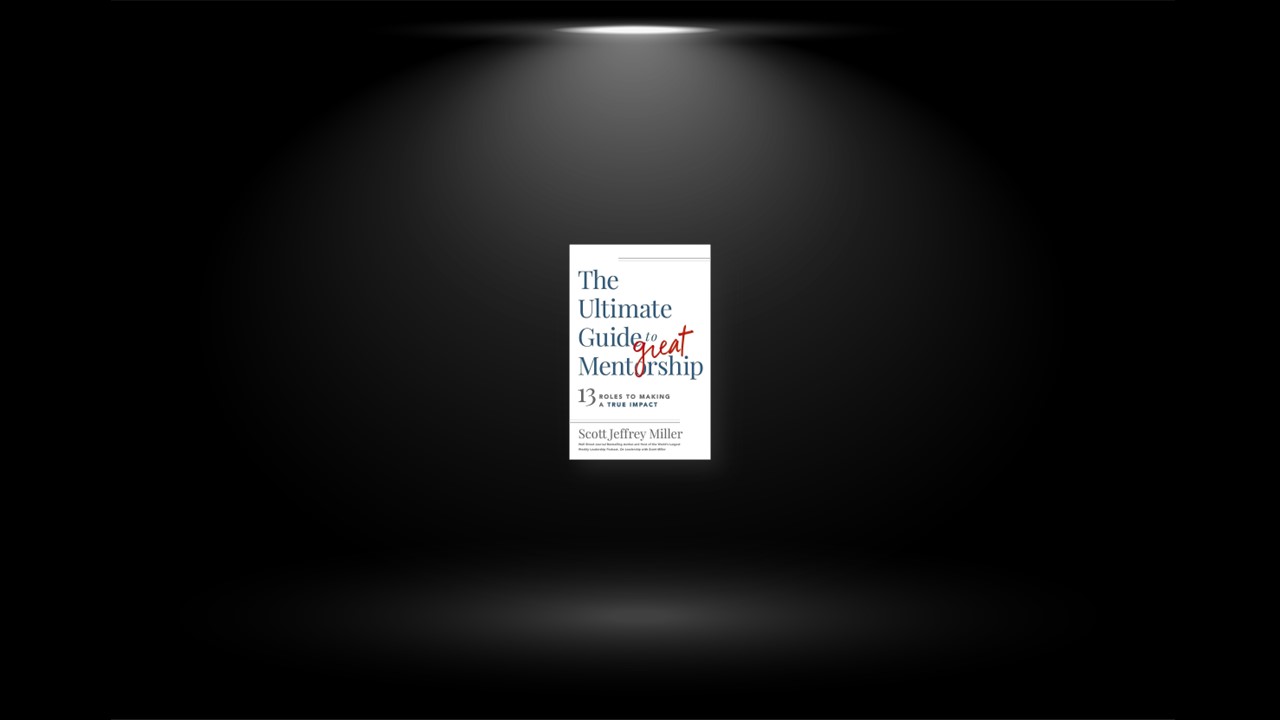Role 1: The Revealer
The Revealer works like a paleontologist, delicately brushing away the metaphorical dust and debris to reveal their mentee’s passions, talents, fears, and goals. The Revealer delicately uncovers what’s just beneath the surface and/or digs deeper as appropriate. In essence, they work to uncover so others can discover—all while remaining hyperaware of their own footprints (personalities) in the sand.
The Goal
To lead the mentee’s awareness, progress, and growth through precise exploration and discovery. And along the way ensure their own style and approach doesn’t overwhelm or distract.
Role 2: The Boundary Setter
The Boundary Setter creates the parameters of the mentoring relationship. They do this up front and as early as possible so that the proper guardrails exist and the mentoring journey can be efficient, effective, and safe.
The Goal
To set clear boundaries about expectations, what the mentoring relationship is and isn’t, and the roles the mentor and mentee will play and won’t.
Role 3: The Absorber
Second in priority to The Revealer is The Absorber. The Absorber recognizes that the best mentors are active listeners. They foster an environment of psychological safety where mentees feel heard, understood, and valued.
The Goal
To invest your focused time and attention into your mentee through active listening, empathy, and intentional focus.
Role 4: The Questioner
The Questioner works like a skilled attorney—less like a prosecuting attorney but more like a defense attorney. Often, a prosecuting attorney puts the accused on the “stand” and badgers them into submission, resulting in feelings of guilt, confusion, and worthlessness—all in an attempt to extract a confession. This is their job. The defense attorney, ideally, relies more on their empathic skills, relatability, common experience, and insight to help zero in on the right issue to exonerate their client.
The Goal
Use thoughtful, relevant, and open-ended questions to help the mentee zero in on the right root cause or underlying issue that can then be worked through together.
Role 5: The Challenger
The Challenger tactfully pushes their mentee to confront assumptions, perspectives, mindsets, or behaviors that are impeding their performance. They determine the level of confrontation that will be helpful given the mentee and the situation, parsing facts from feelings as they model the critical thinking that will serve the mentee throughout their professional life.
The Goal
Use challenges to prompt critical analysis so mentees are more introspective and use sound reasoning in their decision-making.
Role 6: The Validator
The Validator strengthens the mentoring relationship by recognizing, accepting, and communicating that the internal experience (thoughts, feelings, emotions, perceptions, beliefs) of their mentee, whatever they may be, are valid and worthy. The Validator may not agree with the mentee’s conclusions about such experiences, but they recognize you don’t have to agree with someone to validate them. The Validator simply wants to affirm their mentee’s emotions, state of mind, and ability to accomplish their own expressed goals, while ensuring they feel seen and understood.
The Goal
To strengthen the mentoring relationship and progress their journey by strategically validating a mentee’s confidence, competence, fears, and anxieties.
Role 7: The Navigator
The Navigator leverages their knowledge and expertise to chart a way forward for their mentees. Whether having walked the path themselves or gained wisdom from the journey of others, they stay at least “a day ahead.” The Navigator maps out the relevant opportunities, costs, best practices, regulations, processes, guidelines, and even laws that define, restrict, or serve as guideposts along the way.
The Goal
To draw on the mentor’s wisdom and experience to guide the mentee away from potential pitfalls and toward their intended destination (also sometimes known as protecting people from themselves).
Role 8: The Visionary
The Visionary paints a picture of the future to inspire their mentee to take on new challenges, see themselves as more capable, or envision an expanded outcome. The Visionary artfully tempers such a vision, however, so it remains motivating and achievable, not so grandiose as to be unactionable, or reflective of what the mentor values and not the mentee.
The Goal
To provide a vision of a future state that stretches the mentee to do and become more, yet remain grounded within their motivations and present (or reasonably acquirable) skills.
Role 9: The Flagger
The Flagger works like their namesake on a construction site, intervening as necessary, with highly directive signs (“Stop” and “Caution”) to protect their mentees from potential dangers.
The Goal
To appropriately intervene when it’s necessary to slow down or stop a mentee and provide clarity around the The Goal and potential pitfalls ahead.
Role 10: The Distiller
The coming two roles, The Distiller (role #10) and The Activator (role #11), have a lot of similarities. And they also have one clear differentiator: The Distiller role is focused on you and your mentee deciding together which strategies, projects, decisions, and so on warrant continued focus and execution. You’re basically their brainstorming and distillation partner as you “brew” up something together. Whereby The Activator (role #11) is perhaps a little more powerful—even dangerously so—because you are holding your match up to their candle, signifying “Do this, not that.” “Pursue this instead of that.” “Elevate this, forget that.” The difference between these two roles may be subtle and also profound—it’s up to you which and when and how you choose to play either or both of them.
The Goal
To leverage the insights and learnings that come after a series of mentoring sessions, then refine and reduce the options into a focused opportunity for the mentee to consider.
Role 11: The Activator
The Activator senses the right moment to light a spark that ignites their mentee’s momentum, passions, or trajectory. The Activator is concerned with finding the right moment where their mentee would benefit from a carefully worded statement of encouragement and belief, fueling their drive to push harder, set even more ambitious goals, or stretch themselves in new and exciting ways.
The Goal
To ignite new levels of motivation and momentum at an intentionally impactful moment, reinforcing the mentor’s faith in what their mentee can achieve.
Role 12: The Connector
The Connector is an optional role where the mentor considers if, when, and how they might want to connect their mentee to their personal and professional network.
The Goal
To determine if and when a mentor will choose to provide connections to their mentee, enabling them to experience new growth, opportunities, and personal/professional development.
Role 13: The Closer
The Closer is the last role a mentor plays, celebrating the mentoring journey with their mentee as they formally bring the mentoring relationship to a close and point to what’s next.
The Goal
Create a celebratory capstone event that closes out your mentor-mentee relationship and helps them prepare for the next part of their journey.


